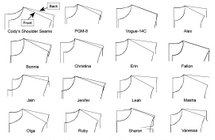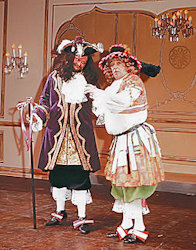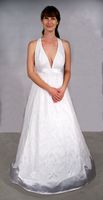|
Books & Online Patternmaking Classes
by Don McCunn About These Patternmaking ClassesThese patternmaking books and classes have evolved over the last 50 years in large part due to the questions I have been asked and comments and suggestions people have made. How to Make Sewing Patterns
When I submitted the initial manuscript to New York publishers, one said he would publish it if I changed it for home sewers (aka sewists) and titled it How to Make Your Own Sewing Patterns, 1973. He then assigned an editor to spend a year testing every pattern in the book to verify they worked. Her one editorial comment at the end of the year was that I should write the instructions with numbered steps instead of the block paragraphs I had used. I have followed this advice religiously for the last 50 years. Once the book was published I had the opportunity to teach pattern design at the adult education department of the local community college. One of the first questions I was asked is "How can I acquire a dress form that is the shape of my body?" I came up with an approach of removing the ease from custom-fit Master Patterns that could then be cut out of stiff mat board and taped together to create what I call a Body Double (aka Custom Dress Form). We made these Body Doubles on the last day of class. I include these instructions in both the 1977 and 2016 editions of my How to Make Sewing Patterns.  Another question I was asked is "How can I measure and fit myself when I do not have anyone to help?" Once again when I rewrote the book in 1977 I was careful to address this issue. As I worked with the students on perfecting fit I realized that while muslin could be used for these custom-ft Bespoke Master Patterns, it was far easier to align the grain of the fabric to the contours of the body using gingham. When I wrote the 2016 edition of the book, I changed the fitting instructions for using gingham. How to Make Custom-Fit Bras & Lingerie
Fashion & Costume Design in Quarter ScaleSince the 70s I have had various people ask me "How can I create ready-to-wear garments I can sell?" From my experience showing people how to make Bespoke garments designed to fit a specific body I always warned them "Just because a garment fits you does not mean it will fit anyone else." Having worked with dozens of models during the development of my two books I realized I had a valuable resource of accurate shapes illustrating how womens body's can differ. I refer to this by saying body shapes are like DNA. They may look the same but there will always be differences. I selected the body shapes of 13 women who I had personally measured and fit who were within 2" of the bust, waist, and hips of a commercial dress form I have. I show how body shapes can vary by illustrating 14 fitting issues such as the slope of the shoulder seams shown below. While the size of these women all fall within a limited size range, the bra cup sizes vary from AA to F. 
My other two books focus on creating Bespoke patterns which require an in-person fitting. Working in quarter scale gave me the idea for a new approach to pattern design which does not require an in-person fitting. It describes how you can create custom fit patterns by Tracing Quarter-Scale Photographs to establish an accurate record of the shape of a body. While this allows sewist to create patterns for people they can not meet in person, it can also be useful for people who are fitting themselves and do not have someone who can help them. NEW Computer Aided Pattern Design, CAPDUsing computers to create patterns has become very prevalent in recent years as illustrated by the prolific availability of PDF sewing patterns. I looked into computerizing my approach to pattern making back at the turn of the century. But the only way to produce the patterns was to print them out on copy paper. This required taping together lots of sheets of paper then cutting the pattern out. If you wanted to fine tune a pattern either for fit or design, you would have to repeat the whole process again. To me I felt this would result in a lot of wasted time. I felt it was much more practcal to use appropriately sized paper and hand draft with a pencil making it easy to change the patterns as needed. Working in quarter scale as described in Fashion & Costume Design in Quarter Scale offers a different option. The patterns can be created and designed in quarter scale on single sheets of copy paper eliminating the need for a lot of taping and cutting. And with the new technology, such as Silhouette America's Portrait 3, the equipment can print and cut both patterns and fabric. Silhouette America's high end Cameo Pro has a cutting area of 24" by 24" so quarter-scale patterns can be increased to full size patterns and cut as paper patterns and/or in the fabric for the garment.  For independent designers who want to create RTW these desktop systems can be an invaluable tool to create a variety of different sizes for a design. They can also be used to adjust RTW patterns to the size of a private client for an improved fit referred to here as Made-to-Measure, MTM, see RTW for Independent Designers. For people interested in patternmaking on a more limited scale, there are a growing number of Makerspaces in libraries and other businesses where the more expensive systems such as the Cameo Pro are available for use at their facilities. Instruction for Pattern Design and CAD programs vary depending on the specific software being used. The CAPD instructions included here use Silhouette America's free Studio program which is used to drive their print-and-cut equipment. The Studio program is neither a dedicated Pattern Design or full blown CAD program. It is essentially a program for creating graphics which includes excellent functions for the details required to create and design custom Bespoke and RTW sewing patterns. The CAPD classes are currently a work-in-progress.
Copyright © 2007, 2020, & 2024 by Donald H. McCunn |
||||||||

